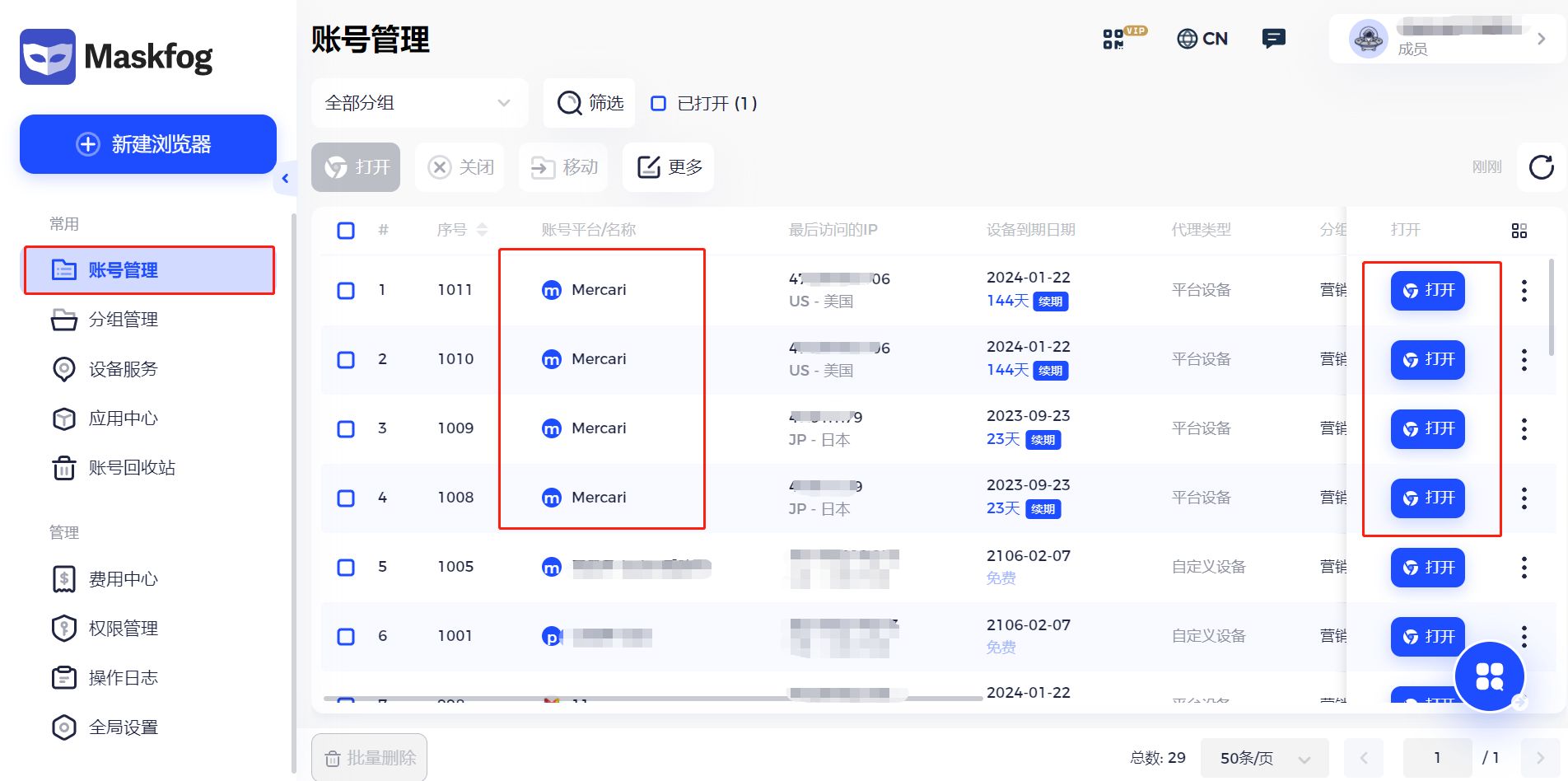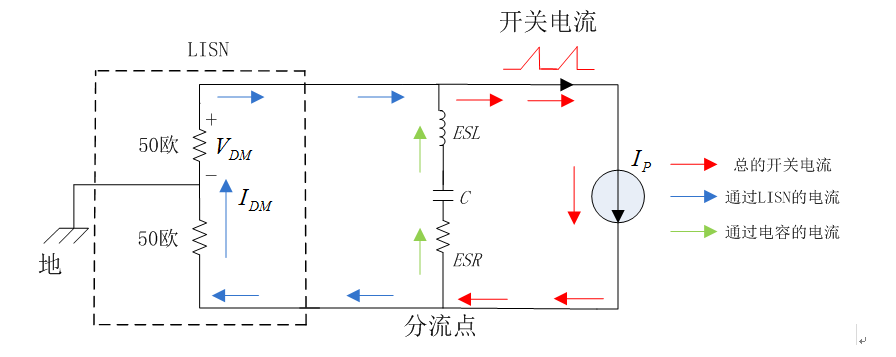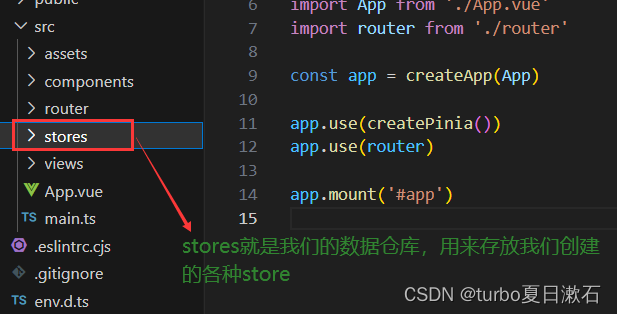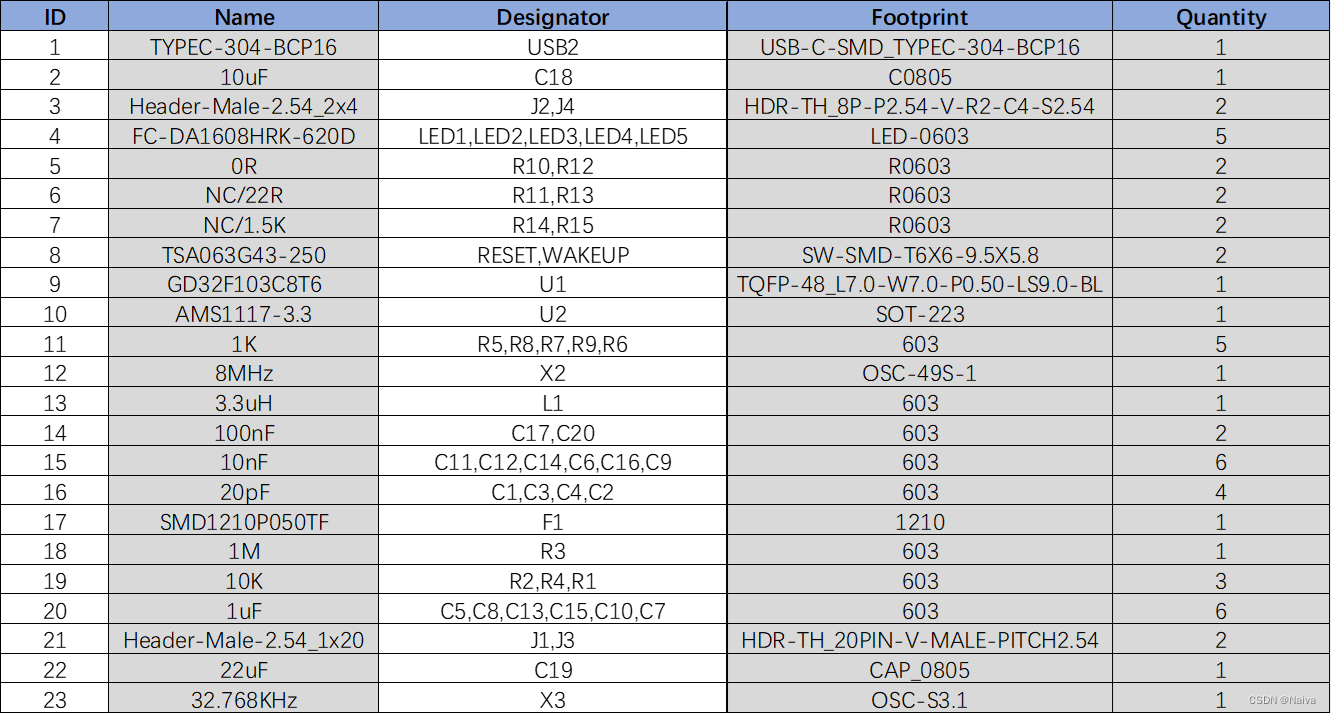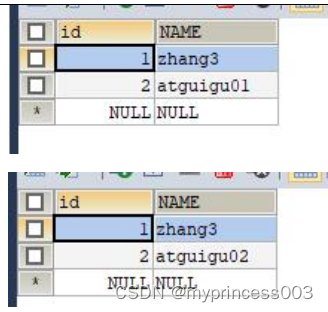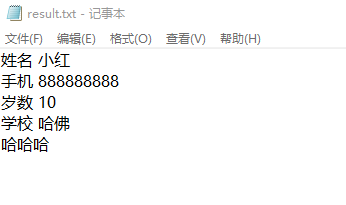不可变集合、Lambda表达式、Stream流
创建不可变集合
不能被修改的集合
应用场景
如果某个数据不能被修改,把它防御性的拷贝到不可变集合中是个很好的实践。
当集合对象被不可信的库调用时,不可变形式是安全的。

创建不可变集合
在List、Set、Map接口中,都存在静态的of方法,可以获取一个不可变的集合。
| 方法名称 | 说明 |
|---|---|
| static<E> List<E> of(E…elements) | 创建一个具有指定元素的List集合对象 |
| static<E> Set<E> of(E…elements) | 创建一个具有指定元素的Set集合对象 |
| static<K, V> Map<K, V> of(E…elements) | 创建一个具有指定元素的Map集合对象 |
注意:这个集合不能添加、不能删除、不能修改。
示例
List
package com.louis;
import java.util.Iterator;
import java.util.List;
/**
* @author XRY
* @date 2023年08月30日16:41
*/
public class ImmutableDemo1 {
public static void main(String[] args) {
/**
* 创建不可变的List集合
* 一旦创建完毕之后,是无法进行修改的,只能查询操作
*/
List<String> list = List.of("louis", "khan", "Alex");
System.out.println("list = " + list.toString());
System.out.println("--------使用迭代器的方法遍历--------");
Iterator<String> iterator = list.iterator();
while (iterator.hasNext()){
String con = iterator.next();
System.out.println(con);
}
/*
* louis
khan
Alex
* */
System.out.println("---------测试是否能删除-----------");
list.remove("louis");
/*Exception in thread "main" java.lang.UnsupportedOperationException
....
at com.louis.ImmutableDemo1.main(ImmutableDemo1.java:32)*/
}
}
Set
package com.louis;
import java.util.Iterator;
import java.util.List;
import java.util.Set;
/**
* @author XRY
* @date 2023年08月30日16:41
*/
public class ImmutableDemo2 {
public static void main(String[] args) {
/**
* 创建不可变的Set集合
* 一旦创建完毕之后,是无法进行修改的,只能查询操作
*/
Set<String> set = Set.of("louis", "khan");
Iterator<String> iterator = set.iterator();
while(iterator.hasNext()){
String con = iterator.next();
System.out.println(con);
}
/*
* louis
khan
* */
set.remove("louis");
/*
* Exception in thread "main" java.lang.UnsupportedOperationException
* ....
* at com.louis.ImmutableDemo2.main(ImmutableDemo2.java:28)
* */
}
}
注意:
当我们要获取一个不可变的Set集合时,里面的参数一定要保证唯一性。
Map
package com.louis;
import java.util.Iterator;
import java.util.Map;
import java.util.Set;
/**
* @author XRY
* @date 2023年08月30日16:41
*/
public class ImmutableDemo3 {
public static void main(String[] args) {
/**
* 创建不可变的Map集合
* 一旦创建完毕之后,是无法进行修改的,只能查询操作
*/
Map<String, String> map = Map.of("1", "louis", "2", "louis", "3", "alex");
Set<String> keys = map.keySet();
for (String key : keys) {
System.out.println(map.get(key));
}
/*
* alex
louis
louis
* */
System.out.println("------------------");
Set<Map.Entry<String, String>> entries = map.entrySet();
for (Map.Entry<String, String> entry : entries) {
String key = entry.getKey();
String value = entry.getValue();
System.out.println(key + "=" + value);
}
/*
* 1=louis
3=alex
2=louis
* */
}
}
注意:
1、键是不能重复的
2、Map里面的of方法,参数是有上限的,最多只能传递20个参数,即10个键值对
原因:可变参数只能存在一个且只能在最后。
static <K, V> Map<K, V> of(K k1, V v1, K k2, V v2, K k3, V v3, K k4, V v4, K k5, V v5,
K k6, V v6, K k7, V v7, K k8, V v8, K k9, V v9, K k10, V v10) {
return new ImmutableCollections.MapN<>(k1, v1, k2, v2, k3, v3, k4, v4, k5, v5,
k6, v6, k7, v7, k8, v8, k9, v9, k10, v10);
}
ofEntries
如果想要创建Map的不可变集合,且键值对的数量超过了10个。
package com.louis;
import java.util.HashMap;
import java.util.Map;
import java.util.Set;
/**
* @author XRY
* @date 2023年08月30日16:41
*/
public class ImmutableDemo4 {
public static void main(String[] args) {
/**
* 创建Map的不可变集合, 键值对的数量超过10个
*/
//1、创建一个普通的Map集合
HashMap<String, String> map = new HashMap<>();
map.put("1", "a");
map.put("2", "b");
map.put("3", "c");
map.put("4", "d");
map.put("5", "e");
map.put("6", "f");
map.put("7", "g");
map.put("8", "h");
map.put("9", "i");
map.put("10", "j");
map.put("11", "k");
//2、利用上面的数据来获取一个不可变的集合
//获取到所有的键值对对象(Entry对象)
Set<Map.Entry<String, String>> entries = map.entrySet();
//把entries变成一个数组(指定类型entry)
Map.Entry[] array = entries.toArray(new Map.Entry[0]);
/*toArray方法会比较集合的长度和数组长度两者之间的大小
如果集合的长度大于数组的长度,表示数据在数组中放不下,此时会根据实际数据的个数重新创建数组。
如果集合的长度小于等于数组的长度,数据在数组中可以存放,此时不会创建新的数组而是直接使用, 剩余的会默认初始化值null*/
Map m = Map.ofEntries(array);
}
}
在JDK10之后,不可变集合可以使用copyOf()方法
/**
* Returns an <a href="#unmodifiable">unmodifiable Map</a> containing the entries
* of the given Map. The given Map must not be null, and it must not contain any
* null keys or values. If the given Map is subsequently modified, the returned
* Map will not reflect such modifications.
*
* @implNote
* If the given Map is an <a href="#unmodifiable">unmodifiable Map</a>,
* calling copyOf will generally not create a copy.
*
* @param <K> the {@code Map}'s key type
* @param <V> the {@code Map}'s value type
* @param map a {@code Map} from which entries are drawn, must be non-null
* @return a {@code Map} containing the entries of the given {@code Map}
* @throws NullPointerException if map is null, or if it contains any null keys or values
* @since 10
*/
@SuppressWarnings({"rawtypes","unchecked"})
static <K, V> Map<K, V> copyOf(Map<? extends K, ? extends V> map) {
if (map instanceof ImmutableCollections.AbstractImmutableMap) {
return (Map<K,V>)map;
} else {
return (Map<K,V>)Map.ofEntries(map.entrySet().toArray(new Entry[0]));
}
}
Lambda表达式
简介
什么是Lambda
Lambda是JAVA 8 添加的新特性,是一个匿名函数,使用Lambda表达式可以对一个接口进行非常简洁的实现。它是实现接口的一种方式。
示例
package com.louis;
/**
* @author XRY
* @date 2023年08月31日16:16
*/
public class Program {
//1、实现接口
MyComparator myComparator = new MyComparator();
//2、使用匿名内部类
Comparator comparator = new Comparator() {
@Override
public int compare(int a, int b) {
return a-b;
}
};
//3、使用Lambda表达式实现接口
Comparator comparator1 = (a, b)->a-b;
class MyComparator implements Comparator{
@Override
public int compare(int a, int b) {
return a - b;
}
}
interface Comparator{
int compare(int a, int b);
}
}
Lambda对接口的要求
虽然可以使用Lambda表达式对某些接口进行简单的实现,但并不是所有的接口都可以使用Lambda表达式实现。要求接口中定义的必须要实现的抽象方法只能是一个。
在JAVA8对接口加了一个新特性:default(可以实现也可以不实现)。
@FunctionalInterface:用来修饰函数式接口,即接口中的抽象方法只有一个。
@FunctionalInterface
interface Comparator{
int compare(int a, int b);
}
Lambda基础语法
Lambda是一个匿名函数,最主要包括参数列表和方法体。
():用来描述参数列表
{}:用来描述方法体
->:Lambda运算符,读作goes to
不同类型接口
package com.louis.interfaces;
/**
* @author XRY
* @date 2023年08月31日16:34
*/
public class Interfaces {
@FunctionalInterface
public interface LambdaHaveReturnMultipleParameter {
int test(int a, int b);
}
@FunctionalInterface
public interface LambdaHaveReturnNoneParameter {
int test();
}
@FunctionalInterface
public interface LambdaHaveReturnSingleParameter {
int test(int a);
}
@FunctionalInterface
public interface LambdaNoneReturnMultipleParameter {
void test(int a, int b);
}
@FunctionalInterface
public interface LambdaNoneReturnNoneParameter {
void test();
}
@FunctionalInterface
public interface LambdaNoneReturnSingleParameter {
void test(int n);
}
}
基础语法实现
package com.louis.syntax;
import com.louis.interfaces.Interfaces;
/**
* @author XRY
* @date 2023年08月31日16:36
*/
public class Syntax1 {
public static void main(String[] args) {
//1、Lambda表达式的基础语法
/*Lambda是一个匿名函数,最主要包括参数列表和方法体。
():用来描述参数列表
{}:用来描述方法体
->:Lambda运算符,读作goes to*/
//无参无返回
Interfaces.LambdaNoneReturnNoneParameter lambda1 = ()->{
System.out.println("hello Lambda");
};
lambda1.test();
/*hello Lambda*/
//无返回值单个参数
Interfaces.LambdaNoneReturnSingleParameter lambda2 = (int a) -> {
System.out.println(a);
};
lambda2.test(2);
/*2*/
//无返回值、多个参数
Interfaces.LambdaNoneReturnMultipleParameter lambda3 = (int a, int b)->{
System.out.println(a-b);
};
lambda3.test(10, 20);
/*-10*/
//有返回值、无参数
Interfaces.LambdaHaveReturnNoneParameter lambda4 = ()->{
System.out.println("lambda4");
return 100;
};
int test = lambda4.test();
System.out.println(test);
/*lambda4
100*/
//有返回值、有一个参数
Interfaces.LambdaHaveReturnSingleParameter lambda5 = (int a)->{
return a + 2;
};
int test1 = lambda5.test(10);
System.out.println(test1);
/*12*/
//有返回值、多个参数
Interfaces.LambdaHaveReturnMultipleParameter lambda6 = (int a, int b)->{
return a + b;
};
int test2 = lambda6.test(10, 20);
System.out.println(test2);
/*30*/
}
}
Lambda语法精简
1、参数:
参数类型:由于在接口中已经定义了参数的类型和数量,所以在Lambda表达式中参数的类型可以省略。
注意:如果需要省略类型,则每一个参数的类型都要省略。千万不要出现省略一个参数,不省略一个参数类型的请况。参数小括号:如果参数列表中,参数的数量只有一个。此时小括号可以省略。
2、方法体
方法大括号:如果方法体中只有一条语句,此时大括号可以省略。
方法体有返回:如果方法体中唯一的一条语句是一个返回语句,则在省略掉大括号的同时也必须省略掉return。
package com.louis.syntax;
import com.louis.interfaces.Interfaces;
/**
* @author XRY
* @date 2023年08月31日16:58
*/
public class Syntax2 {
public static void main(String[] args) {
//语法精简
//1、参数类型
/*参数类型:由于在接口中已经定义了参数的类型和数量,所以在Lambda表达式中参数的类型可以省略。
` 注意:`如果需要省略类型,则每一个参数的类型都要省略。千万不要出现省略一个参数,不省略一个参数类型的请况。*/
Interfaces.LambdaNoneReturnMultipleParameter lambda1 = (a, b)->{
System.out.println("Hello Lambda" + (a + b));
};
lambda1.test(10, 11);
/*Hello Lambda21*/
//2、参数小阔号
/*如果参数列表中参数数量只有一个,可以省略小括号*/
Interfaces.LambdaNoneReturnSingleParameter lambda2 = a->{
System.out.println(a);
};
lambda2.test(10);
/*10*/
//3、方法大括号:如果方法体中只有一条语句,此时大括号可以省略
Interfaces.LambdaNoneReturnSingleParameter lambda3 = a-> System.out.println(a);
lambda3.test(12);
/*12*/
//4、方法体有返回:如果方法体中唯一的一条语句是一个返回语句,则在省略掉大括号的同时也必须省略掉return。
Interfaces.LambdaHaveReturnNoneParameter lambda4 = ()->13;
int test = lambda4.test();
System.out.println(test);
/*13*/
}
}
Lambda语法进阶
方法引用
方法引用:可以将一个Lambda表达式的实现指向一个已经实现的方法。
语法:方法的隶属者::方法名,如果是静态方法,隶属者就是所在类,如果是非静态,隶属者就是所在对象。注意:
- 1、参数数量和类型必须和接口中定义的方法一致
- 2、返回值的类型也一定需要和接口中定义的方法一致
package com.louis.syntax;
import com.louis.interfaces.Interfaces;
/**
* @author XRY
* @date 2023年08月31日17:19
*/
public class Syntax3 {
public static void main(String[] args) {
//方法引用:可以将一个Lambda表达式的实现指向一个已经实现的方法。
//语法:方法的隶属者::方法名,如果是静态方法,隶属者就是所在类,如果是非静态,隶属者就是所在对象。
/*注意:
* 1、参数数量和类型必须和接口中定义的方法一致
* 2、返回值的类型也一定需要和接口中定义的方法一致
* */
/*Interfaces.LambdaHaveReturnSingleParameter lambda = a->a*2;*/
Interfaces.LambdaHaveReturnSingleParameter lambda1 = a->change(a);
//方法引用:引用了change的方法实现
Interfaces.LambdaHaveReturnSingleParameter lambda2 = Syntax3::change;
}
private static int change(int a){
return a*2;
}
}
构造方法引用
Person实体类
package com.louis.data;
/**
* @author XRY
* @date 2023年08月31日17:33
*/
public class Person {
public String name;
public Integer age;
public Person(){
System.out.println("Person的无参构造方法");
}
public Person(String name, Integer age){
this.age = age;
this.name = name;
System.out.println("Person类的有参构造执行了");
}
@Override
public String toString() {
return "Person{" +
"name='" + name + '\'' +
", age=" + age +
'}';
}
}
构造方法引用
package com.louis.syntax;
import com.louis.data.Person;
import com.louis.interfaces.Interfaces;
/**
* @author XRY
* @date 2023年08月31日16:36
*/
public class Syntax4 {
public static void main(String[] args) {
PersonCreator creator = ()->new Person();
creator.getPerson();
/*Person的无参构造方法*/
//无参构造方法的引用
PersonCreator creator1 = Person::new;
creator1.getPerson();
/*Person的无参构造方法*/
//有参构造方法的引用
PersonCreator1 creator2 = Person::new;
creator2.getPerson("louis", 24);
/*Person类的有参构造执行了*/
}
//场景:
interface PersonCreator{
Person getPerson();
}
interface PersonCreator1{
Person getPerson(String name, int age);
}
}
实例
实例1
在一个ArrayList中有若干个Person对象,将这些Person对象按照年龄降序排序
package com.louis.exercise;
import com.louis.data.Person;
import java.util.ArrayList;
/**
* @author XRY
* @date 2023年08月31日17:47
*/
public class Exercise1 {
//集合排序ArrayList
public static void main(String[] args) {
//场景:已知在一个ArrayList中有若干个Person对象,将这些Person对象按照年龄降序排序
ArrayList<Person> list = new ArrayList<>();
list.add(new Person("a", 10));
list.add(new Person("b", 8));
list.add(new Person("c", 3));
list.add(new Person("d", 9));
list.add(new Person("e", 7));
list.add(new Person("f", 5));
list.add(new Person("g", 1));
list.sort(((o1, o2) -> o2.age-o1.age));
System.out.println(list);
/*[Person{name='a', age=10}, Person{name='d', age=9}, Person{name='b', age=8}, Person{name='e', age=7}, Person{name='f', age=5}, Person{name='c', age=3}, Person{name='g', age=1}]*/
}
}
实例2
TreeSet:它是一个set集合,但它能够对集合中的内容进行自动排序,如果两个年龄相同只会保留一个,可以添加逻辑进行保留
package com.louis.exercise;
import com.louis.data.Person;
import java.util.ArrayList;
import java.util.TreeSet;
/**
* @author XRY
* @date 2023年08月31日17:47
*/
public class Exercise2 {
//使用Lambda表达式实现Comparator接口
// TreeSet:它是一个set集合,但它能够对集合中的内容进行自动排序,如果两个年龄相同只会保留一个,可以添加逻辑进行保留
public static void main(String[] args) {
TreeSet<Person> set = new TreeSet<>((o1, o2)->o2.age-o1.age);
set.add(new Person("a", 10));
set.add(new Person("b", 8));
set.add(new Person("c", 3));
set.add(new Person("d", 9));
set.add(new Person("e", 7));
set.add(new Person("f", 5));
set.add(new Person("g", 1));
System.out.println(set);
/*[Person{name='a', age=10}, Person{name='d', age=9}, Person{name='b', age=8}, Person{name='e', age=7}, Person{name='f', age=5}, Person{name='c', age=3}, Person{name='g', age=1}]*/
}
}
实例3
集合遍历
package com.louis.exercise;
import java.util.ArrayList;
import java.util.Collections;
/**
* @author XRY
* @date 2023年08月31日18:08
*/
public class Exercise3 {
//遍历结合
public static void main(String[] args) {
ArrayList<Integer> list = new ArrayList<>();
Collections.addAll(list, 1, 2, 3, 4, 5, 6, 7, 8);
//将集合中的每一个元素都带入到方法accept中
list.forEach(System.out::print);
/*12345678*/
//输出集合中所有的偶数
list.forEach(ele->{if(ele%2==0) System.out.print(ele + " ");});
/*2 4 6 8*/
}
}
实例4
removeIf:移除满足条件的元素
package com.louis.exercise;
import com.louis.data.Person;
import java.util.ArrayList;
/**
* @author XRY
* @date 2023年08月31日18:58
*/
public class Exercise4 {
public static void main(String[] args) {
//需求:删除集合中满足条件的元素
ArrayList<Person> list = new ArrayList<>();
list.add(new Person("a", 10));
list.add(new Person("b", 8));
list.add(new Person("c", 3));
list.add(new Person("d", 9));
list.add(new Person("e", 7));
list.add(new Person("f", 5));
list.add(new Person("g", 1));
//删除集合中年龄大于5的元素
//将集合中的每一个元素都带入到test方法中,如果返回值是true则删除这个元素
list.removeIf(ele->ele.age>5);
System.out.println(list);
/*[Person{name='c', age=3}, Person{name='f', age=5}, Person{name='g', age=1}]*/
}
}
实例5
package com.louis.exercise;
import com.louis.data.Person;
import java.util.ArrayList;
/**
* @author XRY
* @date 2023年08月31日17:47
*/
public class Exercise5 {
public static void main(String[] args) {
//线程实例化
Thread thread = new Thread(()->{
for (int i = 0; i < 10; i++) {
System.out.print(i + " ");
}
});
thread.start();
/*0 1 2 3 4 5 6 7 8 9 */
}
}
函数式接口
系统内置的函数式接口
1、Predicate<T> :参数T ,返回Boolean
IntPredicate<T> :参数int ,返回Boolean
LongPredicate<T> :参数long ,返回Boolean
DoublePredicate<T> :参数double ,返回Boolean
2、Consumer<T>: 参数T,返回值void
IntConsumer 参数int,返回值void
LongConsumer 参数long,返回值void
DoubleConsumer 参数double,返回值void
3、Function<T, R>:参数T,返回值R–>指定类型的参数、指定类型的返回值
IntFunction< R>:参数int,返回值R
LongFunction< R>:参数long,返回值R
DoubleFunction< R>:参数double,返回值R
IntToLongFunction:参数int,返回值long
IntToDoubleFunction:参数int,返回值double
LongToIntFunction:参数long,返回值int
LongToDoubleFunction:参数long,返回值double
DoubleToIntFunction:参数double,返回值int
DoubleToLongFunction:参数double,返回值long
4、Supplier<T>:无参,返回值T
5、UnaryOperator<T>:参数T,返回值T
6、BinaryOperator<T> :参数T,T,返回值T
7、BiFunction<T, U, R> :参数T,U,返回值R
8、BiPredicate<T, U>:参数T、U 返回值boolean
9、BiConsumer<T, U>:参数T,U返回值void
Stream流
示例
场景:创建一个集合,存储多个字符串元素,完成集合的创建和遍历。
ArrayList<String> list = new ArrayList<>();
list.add("张三");
list.add("王大锤");
list.add("张三三");
list.add("张二三");
list.add("李斯");
要求:
- 把所有以"张"开头的元素存储到新集合中
- 把"张"开头,长度为三的元素再存储到新集合中
- 遍历打印最终结果
package com.louis.stream;
import java.util.ArrayList;
/**
* @author XRY
* @date 2023年08月30日19:07
*/
public class StreamDemo1 {
public static void main(String[] args) {
/**
* 创建集合添加元素,完成以下需求
* - 把所有以"张"开头的元素存储到新集合中
* - 把"张"开头,长度为三的元素再存储到新集合中
* - 遍历打印最终结果
*/
ArrayList<String> list = new ArrayList<>();
list.add("张三");
list.add("王大锤");
list.add("张三三");
list.add("张三四");
list.add("李斯");
/* //1、把所有以"张"开头的元素存储到新集合中
ArrayList<String> list1 = new ArrayList<>();
for (String name : list) {
if(name.startsWith("张")){
list1.add(name);
}
}
System.out.println(list1);
//2、把"张"开头,长度为三的元素再存储到新集合中
ArrayList<String> list2 = new ArrayList<>();
for (String name : list1) {
if(name.length() == 3){
list2.add(name);
}
}
//3、遍历打印最终结果
for (String name : list2) {
System.out.println(name);
}*/
list.stream()
.filter(name->name.startsWith("张"))
.filter(name->name.length() == 3)
.forEach(name->System.out.println(name));
}
}
stream流
流的思想

结合Lambda表达式,简化集合、数组的操作。
使用步骤
-
先得到一条stream流(流水线),并把数据放上去
获取方式 方法名 说明 单列集合 default Stream<E> stream() Collecotion中的默认方法 双列集合 无 无法直接使用stream流 数组 public static<T> Stream<T> stream(T[] array) Arrays工具类中的静态方法 一堆零散数据 public static<T> Stream<T> of(T…values) Stream接口中的静态方法 -
使用中间方法对流水线上的数据进行操作
-
使用终结方法对流水线上的数据进行操作
中间方法–>方法调用完毕后,还可以调用其他方法(如:过滤、转换)终结方法–>最后一步,调用完毕之后,不能调用其它方法(如:统计、打印)
示例
单列集合
package com.louis.stream;
import java.util.ArrayList;
import java.util.Collection;
import java.util.Collections;
import java.util.function.Consumer;
import java.util.stream.Stream;
/**
* @author XRY
* @date 2023年08月30日19:07
*/
public class StreamDemo2 {
public static void main(String[] args) {
//1、单列集合获取Stream流
ArrayList<String> list = new ArrayList<>();
Collections.addAll(list, "a", "b", "c", "d", "e");
//因为Array是Collection中的实现类,所以可以直接使用
//获取到一条流水线,并把集合中的数据放到流水线上
/* Stream<String> stream = list.stream();
//使用终结方法打印流水线上的所有数据
stream.forEach(new Consumer<String>() {
@Override
public void accept(String s) {
//s:依次表示流水线上的每一个数据
System.out.println(s);
}
});*/
list.stream().forEach(s -> {
System.out.println(s);
});
/*
* a
b
c
d
e
Process finished with exit code 0
* */
}
}
双列集合
package com.louis.stream;
import java.util.ArrayList;
import java.util.HashMap;
/**
* @author XRY
* @date 2023年08月30日19:07
*/
public class StreamDemo3 {
public static void main(String[] args) {
//双列集合 无 不能直接使用stream流
//1、创建双列集合
HashMap<Integer, String> map = new HashMap<>();
//2、添加数据
map.put(1, "a");
map.put(2, "b");
map.put(3, "c");
map.put(4, "d");
//3、获取stream流
//方式一:获取键的单列集合
map.keySet().stream().forEach(s-> System.out.println(s));
/*
1
2
3
4
* */
//方式二:
map.entrySet().stream().forEach(s-> System.out.println(s));
/*
1=a
2=b
3=c
4=d
* */
}
}
数组
package com.louis.stream;
import java.util.ArrayList;
import java.util.Arrays;
/**
* @author XRY
* @date 2023年08月30日19:07
*/
public class StreamDemo4 {
public static void main(String[] args) {
//数组 public static<T> Stream<T> stream(T[] array) Arrays工具类中的静态方法
//1、创建数组
int[] arr = {1, 2, 3, 4, 5, 6};
//2、获取stream流
Arrays.stream(arr).forEach(s-> System.out.print(s + " "));
/*1 2 3 4 5 6 */
}
}
零散数据
需要注意的是,这些数据的类型必须相同。
package com.louis.stream;
import java.util.ArrayList;
import java.util.stream.Stream;
/**
* @author XRY
* @date 2023年08月30日19:07
*/
public class StreamDemo5 {
public static void main(String[] args) {
//零散的数据
Stream.of(1, 2, 3, 4, 5).forEach(re-> System.out.print(re + " "));
/*1 2 3 4 5 */
}
}
注意:
Stream接口中静态方法of的使用细节:
方法的形参是一个可变参数,可以传递一堆零散的数据,也可以传递数组。但是数组必须是引用类型,如果传递基本数据类型,会把整个数组当作一个元素,放到Stream当中。
stream流的中间方法
| 名称 | 说明 |
|---|---|
| Stream<T> filter(Predicate<? super T> predict) | 过滤 |
| Stream<T> limit(long maxSize) | 获取前几个元素 |
| Stream<T> skip(long n) | 跳过前几个元素 |
| Stream<T> distinct() | 元素去重,依赖(hashCode和equals方法) |
| static<T> Stream<T> concast(Stream a, Stream b) | 合并a和b两个流为一个流 |
| Stream<R> map(Function<T, R> mapper) | 转换流中的数据类型 |
注意:
- 中间方法,返回新的Stream流,原来的Stream流
只能使用一次,建议使用链式编程 - 修改Stream流中的数据,不会影响原来集合中或者数组中的数据
filter
package com.louis.stream;
import java.util.ArrayList;
import java.util.Collections;
import java.util.function.Predicate;
/**
* @author XRY
* @date 2023年08月30日19:07
*/
public class StreamDemo6 {
public static void main(String[] args) {
//filter 过滤
ArrayList<String> list = new ArrayList<>();
Collections.addAll(list,"张三", "张三三", "李斯", "王五");
//把姓张的留下
list.stream().filter(new Predicate<String>() {
@Override
public boolean test(String s) {
//如果返回值为true,表示当前数据留下
//如果返回值为false, 表示当前数据舍弃
return s.startsWith("张");
}
}).forEach(re-> System.out.print(re + " "));
/*张三 张三三 */
list.stream().filter(s->s.startsWith("张")).forEach(re->{
System.out.print(re + " ");
});
/*张三 张三三 */
}
}
limit
list.stream().limit(3).forEach(re-> System.out.print(re + " "));
/*张三 张三三 李斯 */
skip
list.stream().skip(2).forEach(re-> System.out.print(re + " "));
/*李斯 王五 */
distinct
list.add("张三");
System.out.println(list);
list.stream().distinct().forEach(re-> System.out.print(re + " "));
/*[张三, 张三三, 李斯, 王五, 张三]
张三 张三三 李斯 王五 */
concat
ArrayList<String> list1 = new ArrayList<>();
Collections.addAll(list1, "louis", "khan");
Stream.concat(list.stream(), list1.stream()).forEach(re-> System.out.print(re + " "));
/*张三 张三三 李斯 王五 louis khan */
map
ArrayList<String> list2 = new ArrayList<>();
Collections.addAll(list2,"louis-21", "khan-23", "alex-24");
//获取集合中的数字
//第一个类型:表示流中原来的数据类型
//第二个类型:表示要转成的之后的类型
//apply的形参s:表示流中的每一个数据
//返回值:表示转换之后的数据
//当map方法执行完毕之后,流上的数据就变成了整数,所以在下面forEach当中,s依次表示流里面的每一个数据,但这个数据现在就是整数
list2.stream().map(new Function<String, Integer>() {
@Override
public Integer apply(String s) {
String tar = s.split("-")[1];
return Integer.parseInt(tar);
};
}).forEach(re -> System.out.print(re + " "));
*//*21 23 24 *//*
list2.stream().map(s -> Integer.parseInt(s.split("-")[1])).forEach(re-> System.out.print(re + " "));
/*21 23 24 */
stream流的终结方法
| 名称 | 说明 |
|---|---|
| void forEach(Consumer action) | 遍历 |
| long count() | 统计 |
| toArray() | 收集流中的数据,放到数组中 |
| collect(Collector collector) | 收集流中的数据,放到集合中 |
forEach
package com.louis.stream;
import java.util.ArrayList;
import java.util.Collections;
import java.util.function.Consumer;
/**
* @author XRY
* @date 2023年08月31日8:53
*/
public class StreamDemo7 {
public static void main(String[] args) {
/*
*
* | void forEach(Consumer action) | 遍历 |
| long count() | 统计 |
| toArray() | 收集流中的数据,放到数组中 |
| collect(Collector collector) | 收集流中的数据,放到集合中 |*/
ArrayList<String> list = new ArrayList<>();
Collections.addAll(list,"张三", "张三三", "李斯", "王五");
//void forEach(Consumer action)
//accept方法形参s:依次表示流里面的每一个数据
//方法体:对每一个数据的处理操作(打印)
list.stream().forEach(new Consumer<String>() {
@Override
public void accept(String s) {
System.out.print(s + " ");
}
});
*//*张三 张三三 李斯 王五 *//*
list.stream().forEach(s -> System.out.print(s + " "));
/*张三 张三三 李斯 王五 */
}
}
count
// long count() 统计
long count = list.stream().count();
System.out.println(count);
/*4*/
Array
// toArray() 收集流中的数据,放到数组中
Object[] arr1 = list.stream().toArray();
System.out.println(Arrays.toString(arr1));
/*[张三, 张三三, 李斯, 王五]*/
//指定类型
//IntFunction的泛型:具体类型的数组
//apply的形参:流中数据的个数,要跟数组长度保持一致
//apply的返回值:具体类型的数组
//方法体:就是创建数组
String[] arr2 = list.stream().toArray(new IntFunction<String[]>() {
@Override
public String[] apply(int value) {
return new String[value];
}
});
System.out.println(Arrays.toString(arr2));
/*[张三, 张三三, 李斯, 王五]*/
String[] arr3 = list.stream().toArray(value -> new String[value]);
System.out.println(Arrays.toString(arr3));
/*[张三, 张三三, 李斯, 王五]*/
collect
package com.louis.stream;
import java.util.*;
import java.util.function.Function;
import java.util.stream.Collectors;
/**
* @author XRY
* @date 2023年08月30日19:07
*/
public class StreamDemo8 {
public static void main(String[] args) {
ArrayList<String> list = new ArrayList<>();
Collections.addAll(list, "louis-男-23", "khan-男-24", "alex-女-21", "jonny-女-22");
//场景1:收集List集合中所有的男性
List<String> newList = list.stream()
.filter(s -> "男".equals(s.split("-")[1]))
.collect(Collectors.toList());
System.out.println(newList);
/*[louis-男-23, khan-男-24]*/
//场景2:收集Set集合中所有的男性
Set<String> newList1 = list.stream()
.filter(s -> "男".equals(s.split("-")[1]))
.collect(Collectors.toSet());
System.out.println(newList1);
//场景3:收集Map集合中所有的男性,键:姓名、值:年龄
Map<String, Integer> map = list.stream().filter(s -> "男".equals(s.split("-")[1]))
/*
* toMap:包含两个参数
* 参数一:表示键的生成规则
* 参数二:表示值的生成规则
*
* 参数一:
* Function泛型一:表示流中每一个数据的类型
* 泛型二:表示Map集合中键的数据类型
* 方法apply形参:依次表示流里面的每一个数据
* 方法体:生成键的代码
* 返回值:已经生成的键
*
* 参数二:
* Function泛型一:表示流中每一个数据的类型
* 泛型二:表示Map集合中键的数据类型
* 方法apply形参:依次表示流里面的每一个数据
* 方法体:生成值的代码
* 返回值:已经生成的值
*
* */
.collect(Collectors.toMap(new Function<String, String>() {
@Override
public String apply(String s) {
return s.split("-")[0];
}
}, new Function<String, Integer>() {
@Override
public Integer apply(String s) {
return Integer.parseInt(s.split("-")[2]);
}
}));
System.out.println(map);
/*{khan=24, louis=23}*/
//注意:收集到Map集合当中时,键不能重复,否则会报错
Map<String, Integer> map1 = list.stream().filter(s -> "男".equals(s.split("-")[1]))
.collect(Collectors.toMap(s -> s.split("-")[0], re -> Integer.parseInt(re.split("-")[2])));
System.out.println(map1);
/*{khan=24, louis=23}*/
}
}
实例
package com.louis.practise;
import java.util.ArrayList;
import java.util.Collections;
import java.util.List;
import java.util.Map;
import java.util.stream.Collectors;
import java.util.stream.Stream;
/**
* @author XRY
* @date 2023年08月31日9:50
*/
public class Demo01 {
public static void main(String[] args) {
/*
* 定义一个集合,并添加一些整数1、2、3、4、5、6、7、8、9、10
* 过滤基数,只留下偶数
* 并将结果保存起来
* */
ArrayList<Integer> list = new ArrayList<>();
Collections.addAll(list, 1, 2, 3, 4, 5, 6, 7, 8, 9, 10);
List<Integer> newList = list.stream().filter(s -> s % 2 == 0).collect(Collectors.toList());
System.out.println(newList);
/*[2, 4, 6, 8, 10]*/
/*
* 创建一个ArrayList集合,并添加以下字段,字符串中前面时姓名,后面是年龄
* "张三, 23"
* "李四, 24"
* "王五, 25"
* 保留年龄大于等于24,并将集合收集到Map集合中,姓名为键,年龄为值
* */
ArrayList<String> list1 = new ArrayList<>();
Collections.addAll(list1, "张三, 23", "李四, 24", "王五, 25");
Map<String, String> newList1 = list1.stream().filter(s -> Integer.parseInt(s.split(", ")[1]) >= 24)
.collect(Collectors.toMap(s -> s.split(", ")[0], re -> re.split(", ")[1]));
System.out.println(newList1);
/*{李四=24, 王五=25}*/
/*
* 现在有两个ArrayList集合
* 第一个集合中:存储6名男演员的名字和年龄, 第二个集合中:存储6名女演员的名字和年龄
* 姓名和年龄之间使用逗号隔开。如:张三,23
* 要求:
* 1、男演员只要名字为三个字的前两个人
* 2、女演员只要姓杨的,并且不要第一个
* 3、把过滤后的男演员姓名和女演员姓名合并到一起
* 4、将上面的演员信息封装成一个Actor对象
* 5、将所有的演员对象都保存在List集合中
* Actor类:只有:name、age
* */
ArrayList<String> list2 = new ArrayList();
Collections.addAll(list2,"张三,23", "李四,24", "周杰伦,30", "刘德华,50", "王宝强,50", "胡歌,45");
ArrayList<String> list3 = new ArrayList();
Collections.addAll(list3, "杨幂,40", "杨紫,35", "朱丹,45", "柳岩,10", "夏紫,12", "杨演员,35");
List<String> newList2 = list2.stream().filter(s -> s.split(",")[0].length() == 3).limit(2)
.collect(Collectors.toList());
List<String> newList3 = list3.stream().filter(s -> s.startsWith("杨")).skip(1)
.collect(Collectors.toList());
List<Actor> listAll = Stream.concat(newList2.stream(), newList3.stream())
.map((String s) -> new Actor(s.split(",")[0], Integer.parseInt(s.split(",")[1])))
.collect(Collectors.toList());
System.out.println(listAll);
/*[Actor(name=周杰伦, age=30), Actor(name=刘德华, age=50), Actor(name=杨紫, age=35), Actor(name=杨演员, age=35)]*/
}
}
Actor
package com.louis.practise;
import lombok.AllArgsConstructor;
import lombok.Data;
import lombok.NoArgsConstructor;
/**
* @author XRY
* @date 2023年08月31日10:30
*/
@Data
@AllArgsConstructor
@NoArgsConstructor
public class Actor {
private String name;
private Integer age;
}











